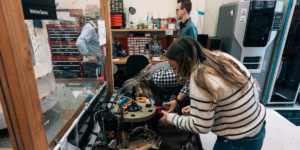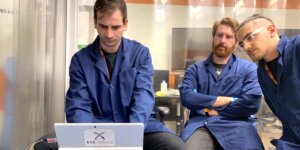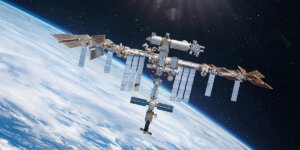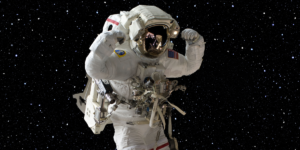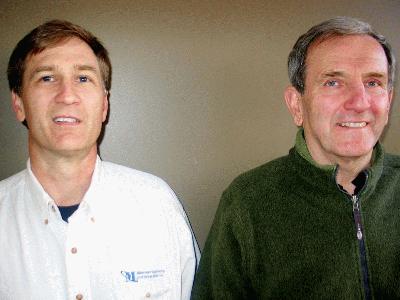
SERC Director Joseph Kunc, right, and Associate Director David Barnhart
ISI will be part of a new USC Viterbi School of Engineering interdisciplinary research center that will focus on the challenge of building new generations of inexpensive spacecraft with commercial, civil and military applications
Directed by Professor Joseph Kunc, of the Viterbi School’s Astronautics and Space Technology Division, the new Space Engineering Research Center (SERC) is a joint collaboration with the USC Information Sciences Institute.”We want to bring together the best of education and research from campus with the proven ‘build and fly’ capabilities of ISI, and tackle paradigm changing space engineering challenges,” said Kunc.
Kunc said SERC would be dedicated to “space engineering, research, and the build and flight demonstration and test of spacecraft and satellites.”
According to SERC Associate Director, David Barnhart, “microsatellites are creating assymetric advantages by filling gaps and needs traditionally held only by large satellites. One of SERC’s goals is to enable ground breaking capabilities through advanced engineering upon current & future space applications for US Industry and government space missions.”
Barnhart said component technologies and evaluating low- cost manufacturing techniques for space are key focus areas. “Our goal is to apply revolutionary development philosophies to challenge traditional cost/schedule and manufacturing processes for new satellite designs.”
As an example of new capabilities applied to space development is SPIDeR, or Spacecraft Portal for Integrated Design in Realtime, a non-traditional approach to a traditional design application using the Internet for collaboration.
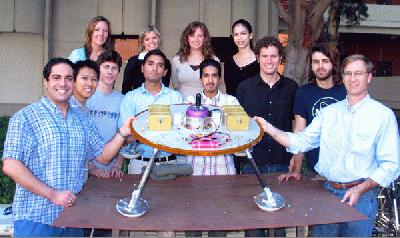 “The goal is to develop a tool for web-based spacecraft design based on user-input mission requirements with interchangeability of subsystem models across a variety of design platforms,” said Kunc.
“The goal is to develop a tool for web-based spacecraft design based on user-input mission requirements with interchangeability of subsystem models across a variety of design platforms,” said Kunc.
Another example of non-traditional approach applied to space is to use a set of existing projects embodying the strategy developed by ISI researchers who pioneered identical robotic modules that link together in different patterns to accomplish different tasks.
SERC researchers believe that this software and behavioral model-driven approach can be applied to independent microsatellites allowing a new host of applications for on- orbit interaction and mission operations.
A key SERC goal is maintaining and expanding a highly educated engineering and scientific space workforce through development of the next generation of key astronautics engineers.
According to Kunc and Barnhart, both US Government and industry will see in the next 5 years significant reductions in existing space experienced personnel through retirement and attrition.
To this end, the SERC directors believe today’s engineers need hands-on experience building working systems to be effective and competitive in today’s global workforce.
To do this SERC is developing exciting/highly motivating projects that can be completed under university “cost and schedule” constraints that deal directly with hands-on activities relative to spacecraft and satellites.
LEAPFROG, (see photo and illustration) USC’s current Lunar Lander Prototype Vehicle, is the first example of a hands-on flight project that focuses the USC researchers interaction with students to concentrate on the integration and buildup of a flight system, and exercise the flight system as a team, working with ISI and the Viterbi School’s Astronautics and Space Technology Division. 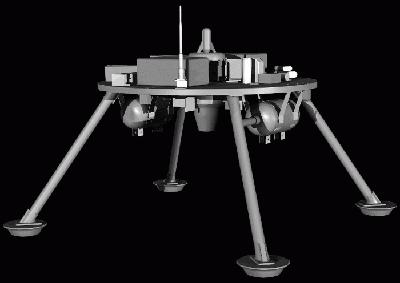
Said Barnhart, who has been deeply involved in LEAPFROG, “‘Hands-On’ is not just a mantra, it is a true requirement where each student is encouraged to get their hands dirty and take on activities they have not done before, outside of their comfort zone or experience.” SERC is helping to augment a robust Astronautics curriculum with the importance of Systems Integration.’
Other hands-on ASTD student space projects that are being integrated into SERC activities include Rocket Laboratory and Microsatellite Projects, in which students have built and launched rockets and very small data and telemetry packages.
These projects are already well established and popular with students, benefiting from extensive participation by Kunc and fellow ASTD faculty members Dan Erwin and Mike Gruntman. Kunc also pointed to “a strong and continuing support of the founder of the Division Provost Max Nikias and Associate Provost Gene Bickers.”
The researchers involved in SERC activities include, in addition to Kunc, Barnhart, Gruntman and Erwin, Sergey Gimelshein, Gerald Hintz, (former mission manager from of Jet Propulsion Laboratory), Darrell Judge (the Department of Physics, and Director of LAS Space Science Center), Andrew Ketsdever (Air Force Rocket Laboratory Special Projects Director), Donald Rapp (former Chief Technologist of Jet Propulsion Laboratory), and Peter Will (Fellow of the Information Sciences Institute).
SERC members represent a broad spectrum of research interests, from theoretical studies of molecular dynamics and supersonic and hypersonic flows, to NASA mission management design and instrumentation, to robotics, to new ideas for Air Force applications, to spacecraft and satellite science and engineering.
Published on February 26th, 2008
Last updated on August 5th, 2021




